By the time you ride or walk all of Fort Worth’s Trinity Trails, you have passed over or under most of the bridges in town—bridges spanning a river, a century, and several architectural styles.
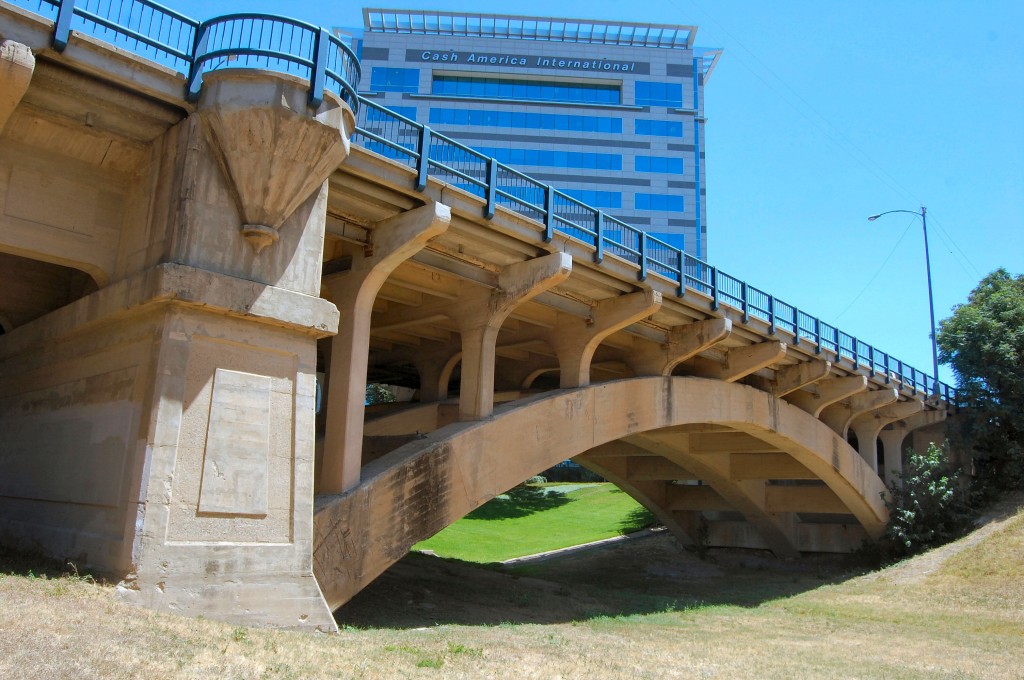
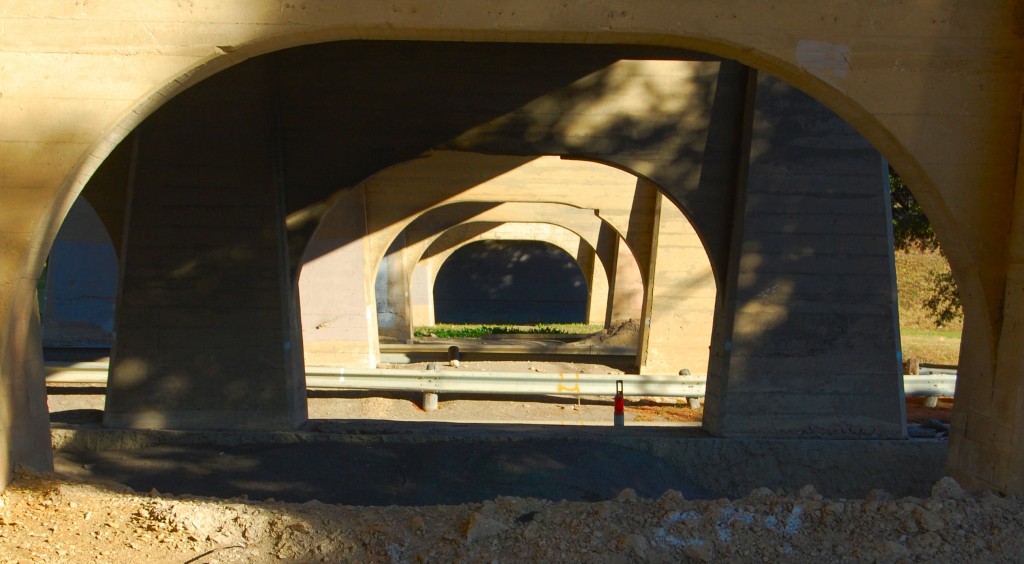
In the first third of the twentieth century Fort Worth seemed to put grace into everything it built, including bridges. Here are two views of a bridge built in 1913, the late West 7th Street Bridge. Lots of arches.
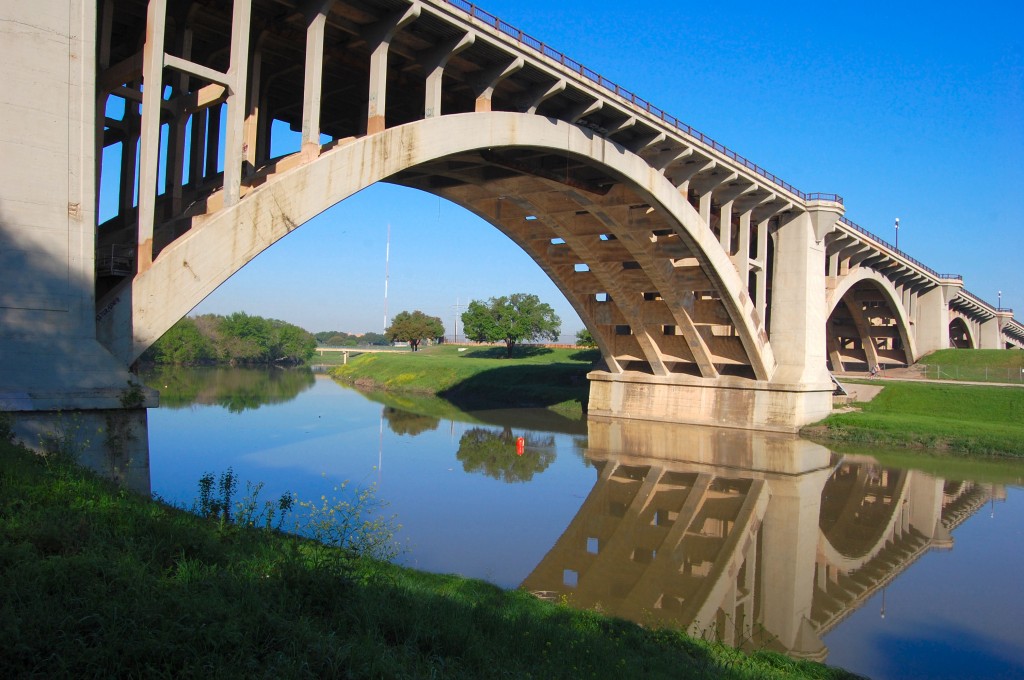 Here is a bridge that opened in 1914, the Paddock Viaduct. More arches.
Here is a bridge that opened in 1914, the Paddock Viaduct. More arches.
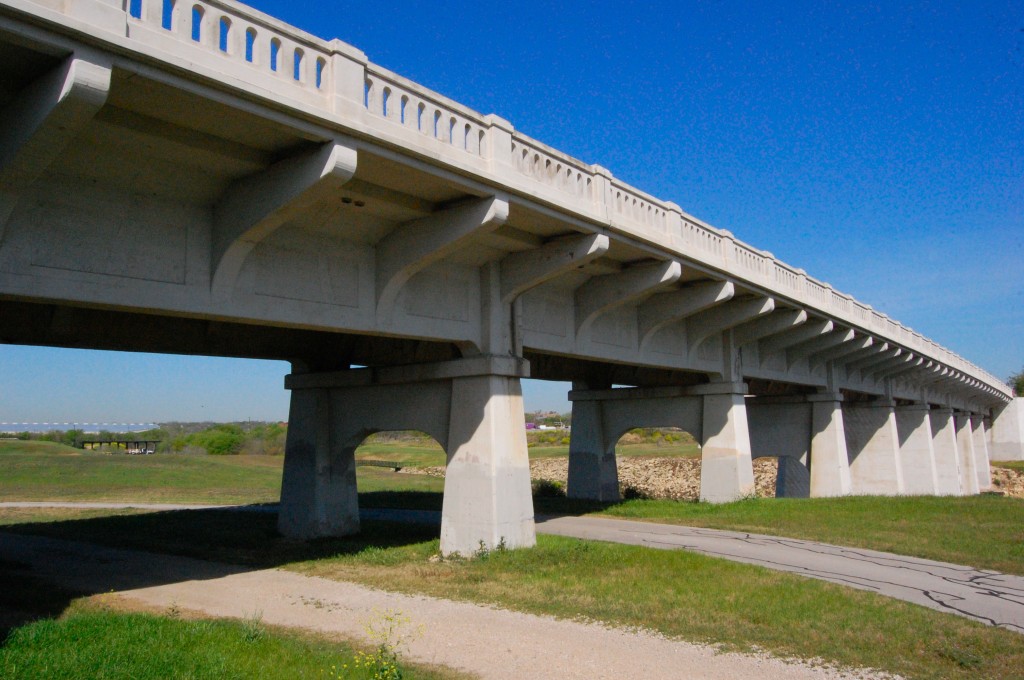
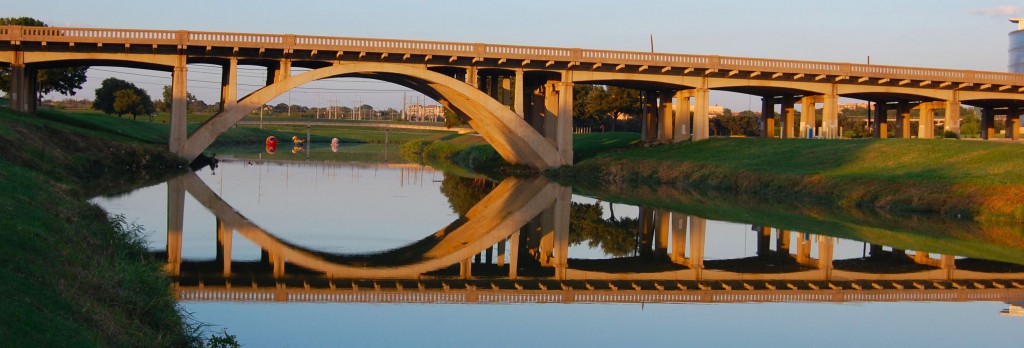
Here are two bridges from the 1930s. The Samuels Avenue Bridge (top) has an arch between each pair of piers and arches in the arcaded railing. The Henderson Street Bridge over the Clear Fork has an arch over the water, arches in the arcaded railing, and slight arches between the piers.
 Fast-forward thirty years. Here is a bridge from the 1960s, carrying the North Freeway over the river. Look at all those long, thin, white, cylindrical piers. The Trinity looks like it’s smoking a whole pack of Camels. No wonder the fish are hacking. This plain style, with its cigarette piers, is typical in the bridges built in the 1950s and 1960s, when most of our expressways were built.
Fast-forward thirty years. Here is a bridge from the 1960s, carrying the North Freeway over the river. Look at all those long, thin, white, cylindrical piers. The Trinity looks like it’s smoking a whole pack of Camels. No wonder the fish are hacking. This plain style, with its cigarette piers, is typical in the bridges built in the 1950s and 1960s, when most of our expressways were built.
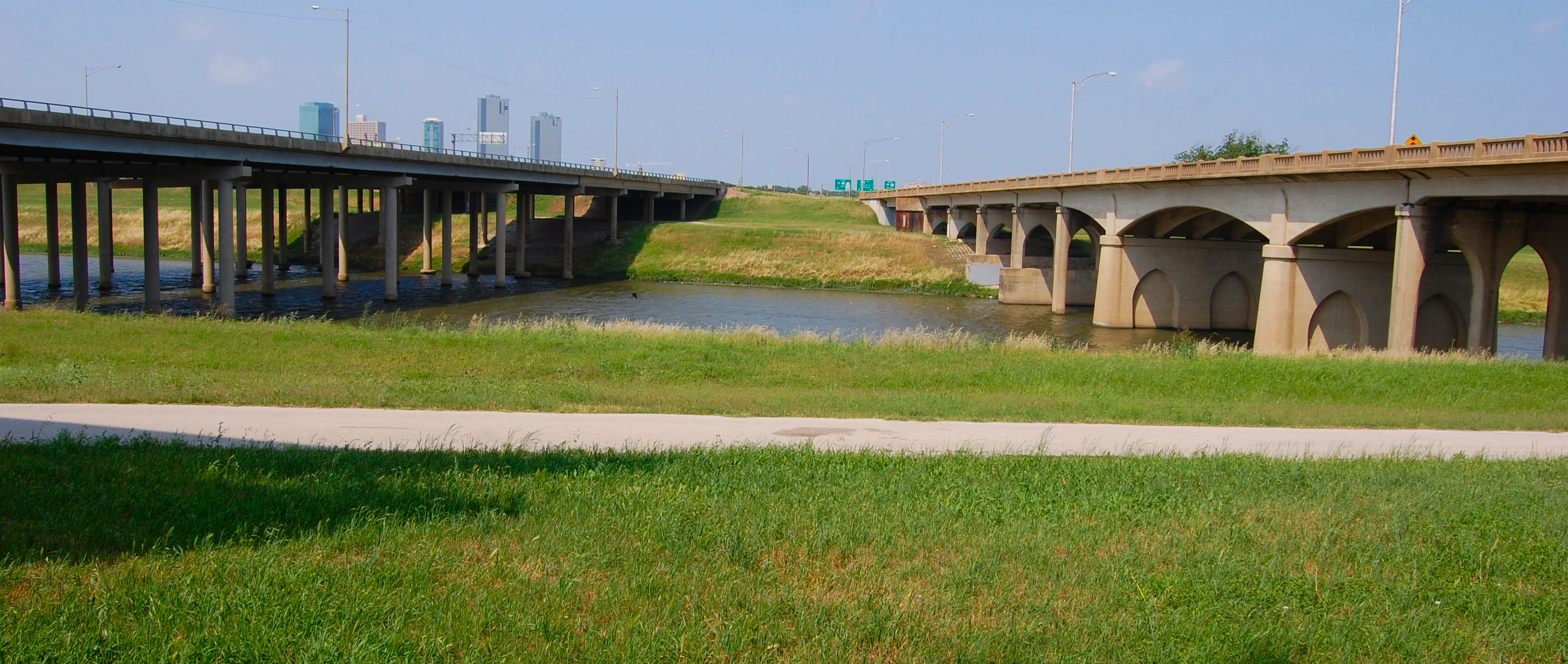 The Airport Freeway Bridge (early 1960s) and the East Belknap Street Bridge (1932) are so close that you can easily draw a contrast.
The Airport Freeway Bridge (early 1960s) and the East Belknap Street Bridge (1932) are so close that you can easily draw a contrast.
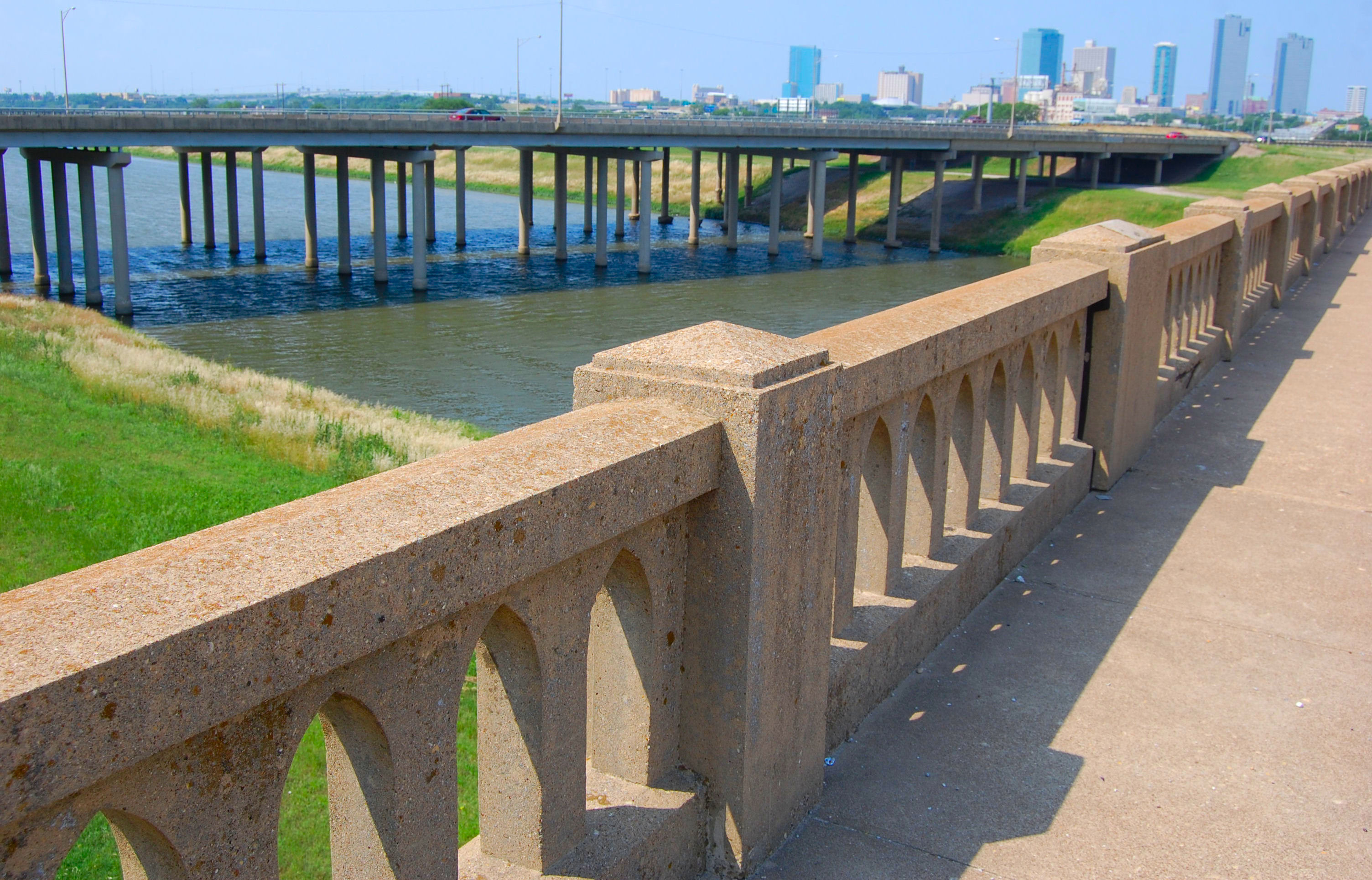 Tubular steel guard rails versus concrete arcaded railings.
Tubular steel guard rails versus concrete arcaded railings.
 Cigarettes versus arches.
Cigarettes versus arches.
But along the river today there is evidence of a change in bridge architecture.





